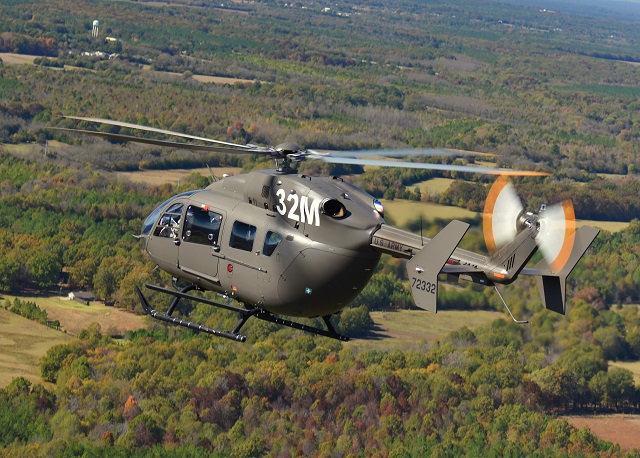Though Airbus Helicopters’ deliveries of the UH-72A Lakota to the US Army are scheduled to conclude in 2020, the company believes the programme may still have some foreign military sales life left.
Airbus Helicopters assembles the twin-engine light utility helicopter in a factory in Columbus, Mississippi and expects to deliver 24 examples this year. The company believes it will finish all 472 deliveries to the US Army in August of 2020.
The UH-72A is a military version of Airbus Helicopters’ EC145 civilian helicopter. US Army and Army National Guard units operate the helicopter in a variety of missions, including flight training, surveillance and reconnaissance, medical evacuation, border security, VIP transport and disaster response.

Airbus Helicopters UH-72A Lakota
Airbus Helicopters
Airbus Helicopters also sells a military version of its EC145, built in Germany, called the H145M, which is capable of carrying two racks of ballistic and guided weapons. Conversely, the UH-72A is unarmed.
Notwithstanding its European cousin’s weaponry, the UH-72A programme still has a shot of making sales, said Axel Humpert, head of the H145 programme. For example, while the Thai Navy went with the H145M, the Thai Army went with the UH-72A.
“The big signal is if a country is interested in this kind of platform and they see that the US has it in its inventory, they believe in it as it is backed up by the US forces,” says Humpert. The State Department's Foreign Military Financing programme can also be helpful in closing sales, he adds.
What’s more, Airbus expects orders for 12 to 15 additional UH-72As from the US Army, said Chris Emerson, head of Airbus Helicopters North American region.
“The Army fleet down at Fort Rucker, based on their student load, they are needing more aircraft. I think there are about 12 aircraft that the Army is looking for at Fort Rucker,” he says. “There are odd ones for the National Guard, [Combat Training Center], National Training Center. They are already funded. They are already in the president’s budget.”
Including those prospective US Army orders, Lakota production would be sustained until 2022. Emerson adds that many in-operation aircraft soon also need major overhaul or obsolescence upgrades.
Source: FlightGlobal.com


























